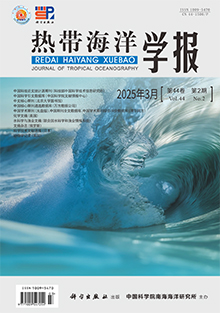To elucidate the species composition of fishes in the Langhua Reef of Xisha Islands, reveal their evolutionary traits, and ensure the protection and sustainable use of coral reef fishes in this region, a comprehensive survey was conducted in 2023. Employing techniques such as dive-fishing, hand-fishing, underwater videography, and environmental DNA (eDNA) analysis, this study integrated historical data from 1979, 1998—1999, and 2003 to analyze the species composition and temporal fluctuations in the fish population of the Langhua Reef. To date, a total of 259 fish species have been identified in the reef, classified into 12 orders, 47 families, and 115 genera. Among these, the most populous are the perch-like species, accounting for 200 varieties. The results indicate an exponential relationship between the number of fish species in the reef and their corresponding maximum overall length, with a significant decline in species count as the maximum length increases. Predominantly, the reef is inhabited by small-sized and carnivorous fish, constituting 49.03% and 59.07% of the total species, respectively. The 2023 survey highlighted that 77 fish species, previously recorded in historical data, have not been observed in recent years, predominantly among carnivorous types. Notably, almost all large fish in the reef are carnivorous. Seven species, listed on the IUCN Red List and categorized as large fish, were absent from the current study, with the exception of the brown-spotted grouper (Epinephelus fuscoguttatus).The species composition, dietary patterns, and historical similarity indices of the Langhua Reef fish varied significantly, especially among large and carnivorous species, which demonstrated the lowest similarity indices. Furthermore, the study revealed a downward trend in both the mean taxonomic distinctness index (Δ+) and the variance in taxonomic distinctness index (Λ+), falling significantly below the 95% confidence intervals. These findings suggest that environmental disturbances, climate change, and human activities have led to a notable turnover in the fish composition of the reef, with large carnivorous species being the most severely affected. This research provides a theoretical reference for a deeper understanding, effective management, and conservation of the Langhua Reef coral reef ecosystem. It also offers foundational data and scientific insights crucial for the restoration of the coral reef ecosystem.








